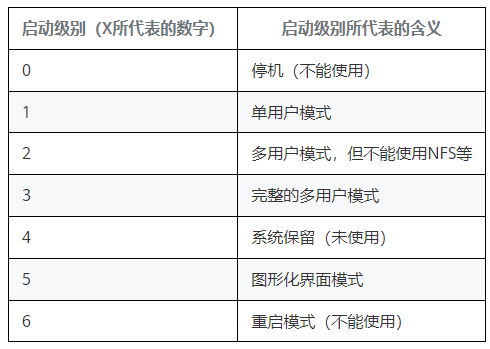手把手教你從安裝CentOS7.4映象開始,搭建IoT視訊監控系統
摘要:在CentOS7.4伺服器版本的環境下安裝nginx伺服器、組態檔伺服器、串流媒體伺服器。
本文分享自華為雲社群《華為雲ECS伺服器安裝CentOS7.4映象,部署GINX伺服器、搭建物聯網視訊監控系統》,作者:DS小龍哥。
在CentOS7.4伺服器版本的環境下安裝nginx伺服器、組態檔伺服器、串流媒體伺服器。 (1)設定NGINX為HTTP伺服器,安裝rtmp模組,完成rtmp視訊推流,支援快取視訊到本地目錄、支援轉為HLS流,通過瀏覽器存取直播流。 (2)部署開機自動啟動程式:方便設定自己的程式為開機啟動。
一、環境介紹
環境介紹: 採用的是華為雲的ECS彈性雲伺服器–映象安裝的CentOS7.4 64位元 -----是伺服器版,非桌面版哦。
在CentOS7.4伺服器版本的環境下安裝nginx伺服器、組態檔伺服器、串流媒體伺服器。
(1)設定NGINX為HTTP伺服器,安裝rtmp模組,完成rtmp視訊推流,支援快取視訊到本地目錄、支援轉為HLS流,通過瀏覽器存取直播流。
(2)部署開機自動啟動程式:方便設定自己的程式為開機啟動。
二、Centos中安裝帶rtmp模組的Nginx
2.1 新安裝的系統可以先安裝一些工具
yum install -y pcre pcre-devel openssl openssl-devel zlib zlib-devel gcc gcc-c++
yum install -y vim wget lsof git zip unzip
2.2 獲取Nginx二進位制原始碼
聽說srtmp模組暫時只支援Nginx13-15版本,當前就在官網下載Nginx14
wget http://nginx.org/download/nginx-1.14.2.tar.gz tar xvf nginx-1.14.2.tar.gz
2.3 獲取nginx-rtmp-module
wget https://github.com/arut/nginx-rtmp-module/archive/refs/tags/v1.2.1.tar.gz tar xvf v1.2.1.tar.gz
2.4 編譯nginx
cd nginx-1.14.2 ./configure --add-module=../nginx-rtmp-module-1.2.1/ --with-http_ssl_module make && make install #建立軟連結 ln -s /usr/local/nginx/sbin/nginx /usr/bin
特別說明:
如果在設定時報錯,一般就是缺東西了,安裝了再設定。
比如:報錯 ./configure: error: the HTTP rewrite module requires the PCRE library. You can either disable the mo .... 解決: yum -y install pcre-devel yum -y install openssl openssl-devel
2.5 修改Nginx的組態檔
開啟/usr/local/nginx/conf/nginx.conf檔案,在檔案最後面加入下面的設定。 rtmp { server { listen 8888; application live { live on; } } }
上面8888是rtmp推流和拉流的埠。
修改nginx.conf之後,重啟nginx服務:
sudo service nginx restart
重啟服務之後,使用netstat -ltn命令檢視TCP監聽的埠,確認下Nginx的監聽埠是否正常。
正常情況,一個是我們自己設定的rtmp服務監聽埠8888,還有一個80是Nginx預設的HTTP服務監聽埠。
接下來可以在瀏覽器裡輸入本機IP地址:http://127.0.0.1/,檢視Nginx服務開啟狀態。
2.6 設定開機啟動
wget http://raw.github.com/JasonGiedymin/nginx-init-ubuntu/master/nginx -O /etc/init.d/nginx chmod +x /etc/init.d/nginx update-rc.d nginx defaults
2.7 控制nginx服務的3個命令: 啟動、停止、重啟
service nginx start
service nginx stop
service nginx restart 或者 nginx -s reload (執行中生效組態檔)
2.8 進行rtmp推流
伺服器搭建好之後,推流和拉流的地址就是: rtmp://<伺服器IP地址>:8888/live/<推流存放的目錄>
例如: rtmp://127.0.0.1:8888/live/xl
2.9 nginx儲存推流視訊檔
如果需要讓推流上來的檔案儲存下來後續進行檢視歷史檔案,可以設定nginx進行儲存。
在原來的/usr/local/nginx/conf/nginx.conf組態檔裡rtmp模組中增加新的設定:
record all; record_unique on; record_path "./video"; #視訊快取的路徑 record_suffix -%Y-%m-%d-%H_%M_%S.flv;
完整/usr/local/nginx/conf/nginx.conf裡的rtmp模組的設定如下:
#RTMP服務 rtmp { server { listen 8888; application live { live on; #開啟實時 record all; record_unique on; record_path "./video"; #視訊快取的路徑 record_suffix -%Y-%m-%d-%H_%M_%S.flv; } } }
設定之後執行命令nginx -s reload重啟伺服器即可。
2.10 rtmp直播流轉為hls直播流
什麼是HLS直播流?
HLS 全稱是 HTTP Live Streaming,是一個由 Apple 公司提出的基於 HTTP 的媒體流傳輸協定,用於實時音視訊流的傳輸。目前HLS協定被廣泛的應用於視訊點播和直播領域。原理介紹
HLS 跟 DASH 協定的原理非常類似。通過將整條流切割成一個小的可以通過 HTTP 下載的媒體檔案,然後提供一個配套的媒體列表檔案,提供給使用者端,讓使用者端順序地拉取這些媒體檔案播放,來實現看上去是在播放一條流的效果。由於傳輸層協定只需要標準的 HTTP 協定,HLS 可以方便的透過防火牆或者代理伺服器,而且可以很方便的利用 CDN 進行分發加速,並且使用者端實現起來也很方便。
HLS 把整個流分成一個個小的基於 HTTP 的檔案來下載,每次只下載一些。HLS 協定由三部分組成:HTTP、M3U8、TS。這三部分中,HTTP 是傳輸協定,M3U8 是索引檔案,TS 是音視訊的媒體資訊。
HLS協定編碼格式要求:
視訊的編碼格式:H264 音訊的編碼格式:AAC、MP3、AC-3 視訊的封裝格式:ts 儲存 ts 索引的 m3u8 檔案
設定/usr/local/nginx/conf/nginx.conf將RTMP流轉為HLS流。
在http模組的server設定裡增加新的設定:
location /live_hls{ types { #m3u8 type設定 application/vnd.apple.mpegurl m3u8; #ts分片檔案設定 video/mp2t ts; } #指向存取m3u8檔案目錄 alias ./m3u8File; #和rtmp模組裡的hls_path設定路徑一樣 add_header Cache-Control no-cache; #禁止快取 }
在rtmp模組的server設定裡增加新的設定:
hls on; #開啟hls hls_path ./m3u8File; #hls的ts切片存放路徑 (這是個目錄,會自動建立的) hls_fragment 2s; #本地切片長度 hls_playlist_length 6s;#HLS播放列表長度
/usr/local/nginx/conf/nginx.conf檔案的完整的設定如下:
worker_processes 1; #Nginx程序數,建議設定為等於CPU總核數 events { worker_connections 1024; #工作模式與連線數上限 } rtmp_auto_push on; #RTMP服務 rtmp { server { listen 8888; application live { live on; #開啟實時 record all; record_unique on; record_path "./video"; #視訊快取的路徑 record_suffix -%Y-%m-%d-%H_%M_%S.flv; hls on; #開啟hls hls_path ./m3u8File; #hls的ts切片存放路徑 hls_fragment 2s; #本地切片長度 hls_playlist_length 6s;#HLS播放列表長度 } } } #HTTP服務 http { include mime.types; default_type application/octet-stream; sendfile on; keepalive_timeout 65; server { listen 8099; server_name localhost; location / { root html; index index.html index.htm; } location /live_hls{ types{ #m3u8 type設定 application/vnd.apple.mpegurl m3u8; #ts分片檔案設定 video/mp2t ts; } #指向存取m3u8檔案目錄 alias ./m3u8File; add_header Cache-Control no-cache; #禁止快取 } location /control{ rtmp_control all; } location /stat{ rtmp_stat all; rtmp_stat_stylesheet stat.xsl; } location /stat.xsl{ root ./nginx-rtmp-module-master; } # redirect server error pages to the static page /50x.html # error_page 500 502 503 504 /50x.html; location = /50x.html { root html; } } }
設定之後重啟伺服器即可。
按照前面的設定,RTMP推流地址和HTTP存取地址如下:
RTMP推流和拉流地址: rtmp://127.0.0.1:8888/live/video01 那麼對應的HTTP的存取地址:http://127.0.0.1:8099/live_hls/video01.m3u8
說明: 轉為HLS流之後,如果瀏覽器支援HLS流就可以直接輸入地址播放。一般手機瀏覽器都支援的。比如:蘋果手機的自帶瀏覽器,QQ瀏覽器等瀏覽器都支援直接播放HLS流。PC機的谷歌瀏覽器預設是不支援的。
2.11 NGINX設定HTTP檔案伺服器
在5.8小節裡介紹瞭如何設定NGINX保留RTMP推流的視訊檔,如果想做一個直播回放,歷史記錄檢視的播放器,那麼就可以將rtmp視訊快取的目錄作為HTTP檔案伺服器存取的根目錄,通過存取這個根目錄獲取目錄下檔案的索引,得到視訊檔的存取地址就可以直接進行播放,就能做一個視訊回放播放器。
在http模組裡新增加一個server設定,並填入新的設定,詳細內容如下:
server { listen 8090; server_name localhost; location / { root ./video; #指定哪個目錄作為Http檔案伺服器的根目錄,如果你這裡寫了file就是你的根目錄,那麼存取的時候file就不會出現在目錄中 autoindex on; #設定允許列出整個目錄 autoindex_exact_size off; #預設為on,顯示出檔案的確切大小,單位是bytes。改為off後,顯示出檔案的大概大小,單位是kB或者MB或者GB autoindex_localtime on; #預設為off,顯示的檔案時間為GMT時間。改為on後,顯示的檔案時間為檔案的伺服器時間 charset utf-8; #防止檔案亂碼顯示, 如果用utf-8還是亂碼,就改成gbk試試 } }
特別說明: nginx是支援設定多個server設定,監聽不同的埠,可以給檔案伺服器單獨設定一個監聽埠,專門作為檔案遍歷使用。
/usr/local/nginx/conf/nginx.conf檔案的完整的設定如下:
worker_processes 1; #Nginx程序數,建議設定為等於CPU總核數 events { worker_connections 1024; #工作模式與連線數上限 } rtmp_auto_push on; #RTMP服務 rtmp { server { listen 8888; application live { live on; #開啟實時 record all; record_unique on; record_path "./video"; #視訊快取的路徑 record_suffix -%Y-%m-%d-%H_%M_%S.flv; hls on; #開啟hls hls_path ./m3u8File; #hls的ts切片存放路徑 hls_fragment 2s; #本地切片長度 hls_playlist_length 6s;#HLS播放列表長度 } } } #HTTP服務 http { include mime.types; default_type application/octet-stream; sendfile on; keepalive_timeout 65; server { listen 8090; server_name localhost; location / { root ./video; #指定哪個目錄作為Http檔案伺服器的根目錄,如果你這裡寫了file就是你的根目錄,那麼存取的時候file就不會出現在目錄中 autoindex on; #設定允許列出整個目錄 autoindex_exact_size off; #預設為on,顯示出檔案的確切大小,單位是bytes。改為off後,顯示出檔案的大概大小,單位是kB或者MB或者GB autoindex_localtime on; #預設為off,顯示的檔案時間為GMT時間。改為on後,顯示的檔案時間為檔案的伺服器時間 charset utf-8; #防止檔案亂碼顯示, 如果用utf-8還是亂碼,就改成gbk試試 } } server { listen 8099; server_name localhost; location / { root html; index index.html index.htm; } location /live_hls{ types{ #m3u8 type設定 application/vnd.apple.mpegurl m3u8; #ts分片檔案設定 video/mp2t ts; } #指向存取m3u8檔案目錄 alias ./m3u8File; add_header Cache-Control no-cache; #禁止快取 } location /control{ rtmp_control all; } location /stat{ rtmp_stat all; rtmp_stat_stylesheet stat.xsl; } location /stat.xsl{ root ./nginx-rtmp-module-master; } # redirect server error pages to the static page /50x.html # error_page 500 502 503 504 /50x.html; location = /50x.html { root html; } } }
存取檔案測試: http://127.0.0.1:8090
三、Linux下開機啟動的執行流程
3.1 開機執行指令碼順序
第一步:init /etc/inittab 第二步:啟動相應的指令碼,並且開啟終端 rc.sysinit rc.d(裡面的指令碼) rc.local 第三步:啟動login登入介面 login 第四步:在使用者登入的時候執行sh指令碼的順序,每次登入的時候都會完全執行的 /etc/profile.d/file /etc/profile /etc/bashrc /root/.bashrc /root/.bash_profile
3.2 Linux中修改環境變數及生效方法
修改/etc/profile 或者 /etc/bashrc 可以讓環境變數全部使用者全域性生效(需要重啟系統)。
修改~/.bash_profile 或~/.bashrc對當前使用者全域性有效(需要重啟系統)。
如果需要立即生效,修改完之後用source命令執行,如:
source .bash_profile
3.3 rcX.d的啟動級別
一般有開機自啟動的需求時,一般會在/etc/rc.local檔案中寫命令列或指令碼執行命令的方式來實現。也可以在/etc/profile檔案裡實現(不建議)。
現在很多Linux發行版,預設是沒有/etc/rc.local這個檔案或者沒有去執行,而使用的是/etc/rcX.d。
rcX.d並不是指這個目錄或者檔案就是叫rcX.d,這其中的X對應是0~6這7個數位,不同的數位對應著不同的級別
檢視當前系統/etc/rcX.d目錄:
[root@ecs-c687-ecrs work]# ls /etc/ | grep rc
bashrc
csh.cshrc
inputrc
mail.rc
rc0.d
rc1.d
rc2.d
rc3.d
rc4.d
rc5.d
rc6.d
rc.d
rc.local
vimrc
virc
wgetrc
通過runlevel命令檢視當前系統的啟動級別:

我當前使用的是CentOS7.4伺服器版本,啟動級別如下:
[root@ecs-c687-ecrs ]# runlevel N 3
檢視/etc/rc3.d/目錄下檔案的詳細資訊:
[root@ecs-c687-ecrs ~]# ls /etc/rc3.d/ -l total 0 lrwxrwxrwx. 1 root root 20 Feb 14 2022 K50netconsole -> ../init.d/netconsole lrwxrwxrwx. 1 root root 17 Feb 14 2022 K90network -> ../init.d/network lrwxrwxrwx 1 root root 19 Sep 15 22:07 S12hostguard -> ../init.d/hostguard lrwxrwxrwx 1 root root 24 Feb 14 2022 S50multi-queue-hw -> ../init.d/multi-queue-hw
可以看到該目錄下的檔案都是連結檔案,而且都是指向/etc/init.d中的shell指令碼或者其他可執行檔案,它們的命名方式基本都是以S或者K開頭,其後緊跟一個數位,數位後則是連結檔案的名字,這個名字可以自行定義。
命名規則解釋如下:
以K90network為例: K表示stop,S表示start。(表示需要傳入引數),也就是說開機自啟動命令會向指令碼傳入start或者stop,在指令碼裡可以收到引數$1進行一些判斷,完成一些不同情況下的邏輯處理。比如:開機執行什麼程式碼,關機執行什麼程式碼。 90 表示指令碼執行等級。(通常越小越優先) network與/etc/init.d下的指令碼檔名稱保持一致。
3.4 利用rcX.d實現開機自動執行指令碼
比如:需求是開機之後建立一個檔案,並向檔案裡存放一些資料。
(1)先在/etc/init.d目錄下建立一個up_demo.sh指令碼,編寫指令碼程式碼:
#!/bin/bash echo $0 $1 >> /home/up_test.txt
修改指令碼許可權:
[root@ecs-c687-ecrs init.d]# chmod 777 /etc/init.d/up_demo.sh [root@ecs-c687-ecrs init.d]# ls up_demo.sh -l -rwxrwxrwx 1 root root 76 Sep 16 14:13 up_demo.sh
(2) 在/etc/rc3.d目錄裡,建立軟連線。 (因為我的系統啟動級別為3)
[root@ecs-c687-ecrs rc3.d]# ln -s /etc/init.d/up_demo.sh S10up_demo [root@ecs-c687-ecrs rc3.d]# ls -l total 0 lrwxrwxrwx. 1 root root 20 Feb 14 2022 K50netconsole -> ../init.d/netconsole lrwxrwxrwx. 1 root root 17 Feb 14 2022 K90network -> ../init.d/network lrwxrwxrwx 1 root root 22 Sep 16 14:17 S10up_demo -> /etc/init.d/up_demo.sh lrwxrwxrwx 1 root root 19 Sep 15 22:07 S12hostguard -> ../init.d/hostguard lrwxrwxrwx 1 root root 24 Feb 14 2022 S50multi-queue-hw -> ../init.d/multi-queue-hw
(3)重啟系統,進入到/home目錄下檢視檔案內容,可以看到開機啟動成功,內容已經寫到up_test.txt檔案裡了。
Welcome to Huawei Cloud Service [root@ecs-c687-ecrs ~]# cd /home/ [root@ecs-c687-ecrs home]# ls lib_run.sh up_test.txt video work work_pc work.tar.gz [root@ecs-c687-ecrs home]# cat up_test.txt /etc/rc.d/init.d/up_demo.sh start [root@ecs-c687-ecrs home]#